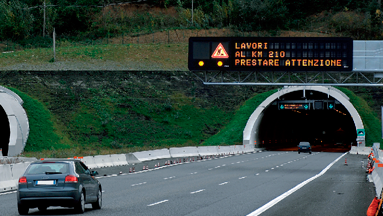DATEX II version 2.3
DATEX II version 2.3 is available and contains three very valuable extensions that support current developments in the user community of DATEX II.
- markup of Safety Related Traffic Information situaitions
- parking information
- OpenLR as supported location referencing method
SRTI markup
With this extension, it is possible to label DATEX II traffic messages (i.e. SituationRecords) as safety related according to the Commission Delegated Regulation (EU) No 886/2013 ‘with regard to data and procedures for the provision, where possible, of road safety-related minimum universal traffic information free of charge to user’.
A subset of DATEX II elements, which should be used to meet the requirements of the delegated regulation, can be found in the document “Safety related message sets – Selection of DATEX II Codes, TPEG2-TEC-Causes and TMC-Events for EC high level Categories” from the ITS Directive Working Group, which is enclosed in the documentation of this package.
Parking
The Level B extension for three publications publishing parking information (ParkingTablePublication, ParkingStatusPublication and ParkingVehiclesPublication).
Topics covered by this extension are:
- Parking sites (urban context or motorway / truck parking)
- Group of parking sites (i.e. parking areas or aggregated information)
- Parking spaces and goups of parking spaces
- Assignments (vehicles, users, mixed usage by time, ….)
- Opening times
- Tariffs
- Security
- Services and equipment (each with tariffs, openening times, status)
- Georeferencing (of facilitiies, parking spaces, groups of parking spaces or entrances/exits)
- Occupancy information
- Status information
- Vehicle flow information / measurements
and many more details.
This extension is in progress to become standardised in the formal DATEX II standard: CEN-TS 19157 part 6.
OpenLR location referencing supported
OpenLR is an open, compact and royalty-free dynamic location referencing method which enables reliable data exchange and cross-referencing using digital maps of different vendors and versions. OpenLR helps to enhance existing applications and generates opportunities for new services. It facilitates new business opportunities in various areas of Intelligent Transport Systems (ITS) such as traffic information services, map content exchange and Cooperative Systems where precise and compact dynamic location information is needed.
Dynamic location referencing is a requirement for many ITS and LBS (location based systems) systems and services. The use of various location reference methods will limit the interoperability of systems. A universal standard across a variety of applications will enable system integration and open the market for LBS.
DATEX II was designed for being able to be extended with user specific needs, national requirements and upcoming new specifications and standards. Swedish Transport Administration and the Dutch National Datawarehouse for Traffic information have jointly and together with TomTom developed an extension for OpenLR in DATEX II.
OpenLR has been designed for the use case of transferring traffic information from a centre to in-vehicle systems, built-in or used as an add-on (PND, Smart Phone). The information transferred can consist of the current traffic situation at a certain location, a traffic forecast or special alerts. The corresponding locations are roads or a list of connected roads. Additionally OpenLR supports point locations which are zero-dimensional elements in a map that specify a geometric location. Use cases for point locations are e.g. point of interests (POIs), petrol stations and speed cameras.
Compared to the existing RDS-TMC method every location in a map can be transferred using OpenLR. Besides the XML format a binary format for compact and bandwidth efficient transmission is supported. The goal of OpenLR is the wide-scale adoption by the industry at large. OpenLR is therefore proposed as an open standard in an Open Source framework.
The OpenLR extension for DATEX II makes it possible to use DATEX II with an extended location referencing model containing OpenLR. This makes it possible e.g. to deliver on the fly referencing in OpenLR format from the source of the information e.g. a Traffic Information Centre.
The model of the extensions is based on the OpenLR specifications as defined in the OpenLR whitepaper version 1.5 (http://openlr.org/data/docs/OpenLR-Whitepaper_v1.5.pdf).


